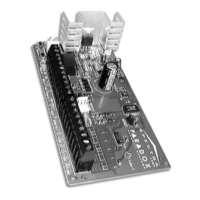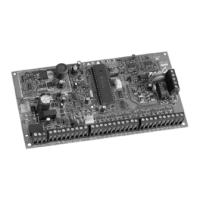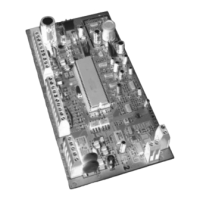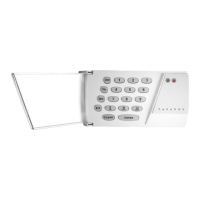DIGIPLEX SERIES
SOFTWARE RESET
Performing a software reset will set certain parameters to default values. To do so:
1) Make sure the "RESET" jumper on the control panel is on.
2) Enter Programming Mode (see page 2).
3) Enter the 3-digit [SECTION] corresponding to the software reset you wish to perform:
Section # Description
[970] Entering this section will reset all programmable sections from [001] to [990] to factory default values.
[975] Entering this section will reset all Zone and Keyswitch programming sections from [001] to [156] to default.
[976] Entering this section will reset all programmable timers in sections [200] to [274] to default values.
[977] Entering this section will reset all PGM and option sections from [400] to [522] to default values.
[978] Entering this section will reset all communication sections from [523] to [718] to default values.
[979] Entering this section will reset all user code sections from [802] to [864] to default values.
Section # Data Description Default Value (notes)
[990] ___/___/___ (147=lock, 000=unlock) LOCK INSTALLER CODE 000
INSTALLER QUICK FUNCTION KEYS
Press and hold the [0] key and key in the [INSTALLER CODE]. Then press one of the following function keys:
[STAY] - Test Report: Sends the "Test Report" report code programmed in section [717] to the central station.
[FORCE] - Call WinLoad Software: Will dial the PC telephone number programmed in section [560] in order to
initiate communication with a computer using the WinLoad Upload/Download software.
[ARM] - Answer WinLoad Software: Will force the control panel to answer a call made by the Central Monitoring
Station that is using the WinLoad upload/download software.
[DISARM] - Cancel Communication: Cancels all communication with the WinLoad Software or with the Central
Station until the next reportable event.
[MEM] - Installer Test Mode: The installer test mode will allow you to perform walk tests where the bell or siren will squawk
to indicate opened zones. Press [MEM] again to exit. Partitions can not be armed if the Installer Test Mode is enabled.
[TRBL] - Start Module Scan: The keypad will display the serial number of each module on the bus.

